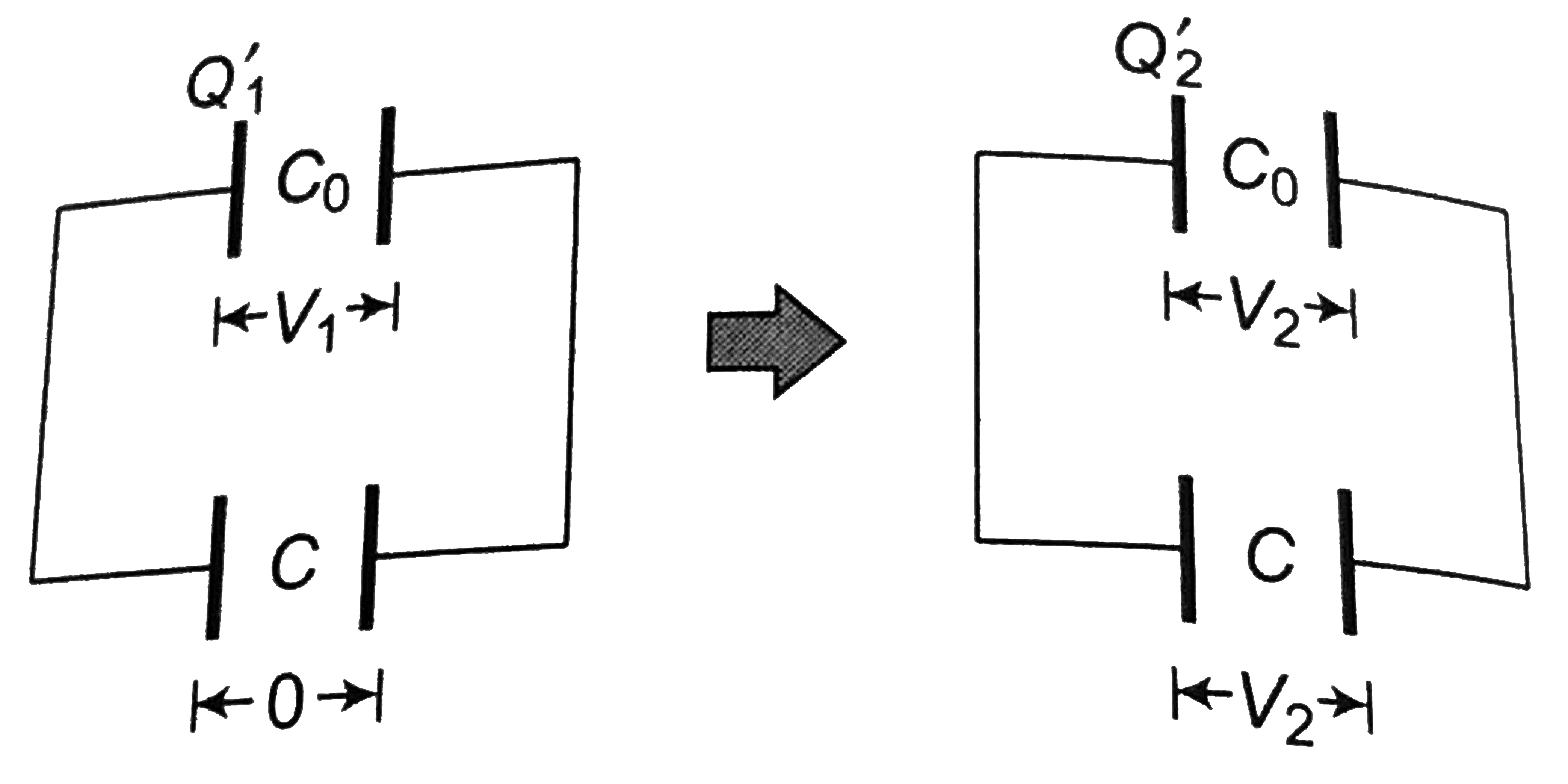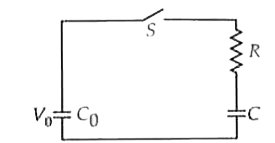A capacitence of C0 is charged to a potential V0 and then isolated. A small cpacitor C is then charged from C0, discharged and charged again, the process bing repeated n times. Due to this, potential of the large capacitor is decreased to V. find the capacitance of the small capacitor. is it possible to remove charge on C0 completely in this way?
First time:
common potential :
V1=C0V0+C×0C0+C=(C0C0+C)V0
Final charge on (i),
Q'1=C0V1=C20V0C0+C
second time:
Common potential :
V2=Q'1+0C0+C=(c0C0+C)2V0
nthtime:Vn=(C0C0+C)nV0
V=(C0C0+C)nV0
C0C0+C=(VV0)1n⇒C+C0C0=(V0V)1/n
C=C0⎡⎣(V0V)1n−1⎤⎦
The charge on C0 cannot be removed completely in this way.


Topper's Solved these Questions
Similar Questions
A capacitor of capacitance Co is charged to a potential V and then isolated. A small capacitor C is then charged from Co, discharged and charged again, the process being repeated n times. Due to this, potential of the large capacitor is decreased to V. Find the capacitance of the small capacitor :
View SolutionA capacitor of capacitance C0 is charged to a patential V0 and then isolated. A small capacitor C is then charged from C0, discharged and charge again, the process being is decreased to V. Find the value of C.
View Solution
Knowledge Check
- Question 1 - Select One
A capacitor of capacitance C0 is charged to a voltage V0 and then isolated. An uncharged capacitor C is then charged from C0 , discharged and charged again , the process is repeated n times. Due to this, potential of the C0 is decreased to V, then value of C is :
AC0[V0/V]1/nBC0[(V0/V)1/n−1]CC0[(V0/V)−1]DC0[V/Vn0+1] - Question 2 - Select One
A capacitor of capacitance C0 is charged to potential V0. Now it is connected to another uncharged capacitor of capacitance C02. Calculate the heat loss in this process.
A12C0V20B13C0V20C16C0V20D18C0V20 - Question 3 - Select One
The potentials of the two plates of capacitor are +10V and −10V. The charge on one of the plate is 40C. The capacitance of the capacitor is
A2FB4FC0.5FD0.25F
A capacitor of capacitance 6μF is charged to a potential of 150V. Its potential falls to 90V, when another uncharged capacitor is connected to it. Find the capacitance of the second capacitor and the amount of energy lost due to the connection.
View SolutionA 100pF capacitor is charged to a potential difference of 80.0V and the charging battery is disconnected. The capacitor is then connected in parallel with a second capacitor. If the potential difference across the first capacitor drops to 35.0 V what is the capacitance of this second capacitor?
View SolutionA capacitor of capacitance C0 is charged to a potential V0 and is connected with another capacitor of capacitance C as Shown . After closing the switch S, the common potential across the two capacitors becomes V . The capacitance C is given by
 View Solution
View SolutionA capacitor or capacitance C1 is charge to a potential V and then connected in parallel to an uncharged capacitor of capacitance C2. The fianl potential difference across each capacitor will be
View SolutionA capacitor or capacitance C1 is charge to a potential V and then connected in parallel to an uncharged capacitor of capacitance C2. The fianl potential difference across each capacitor will be
View Solution
